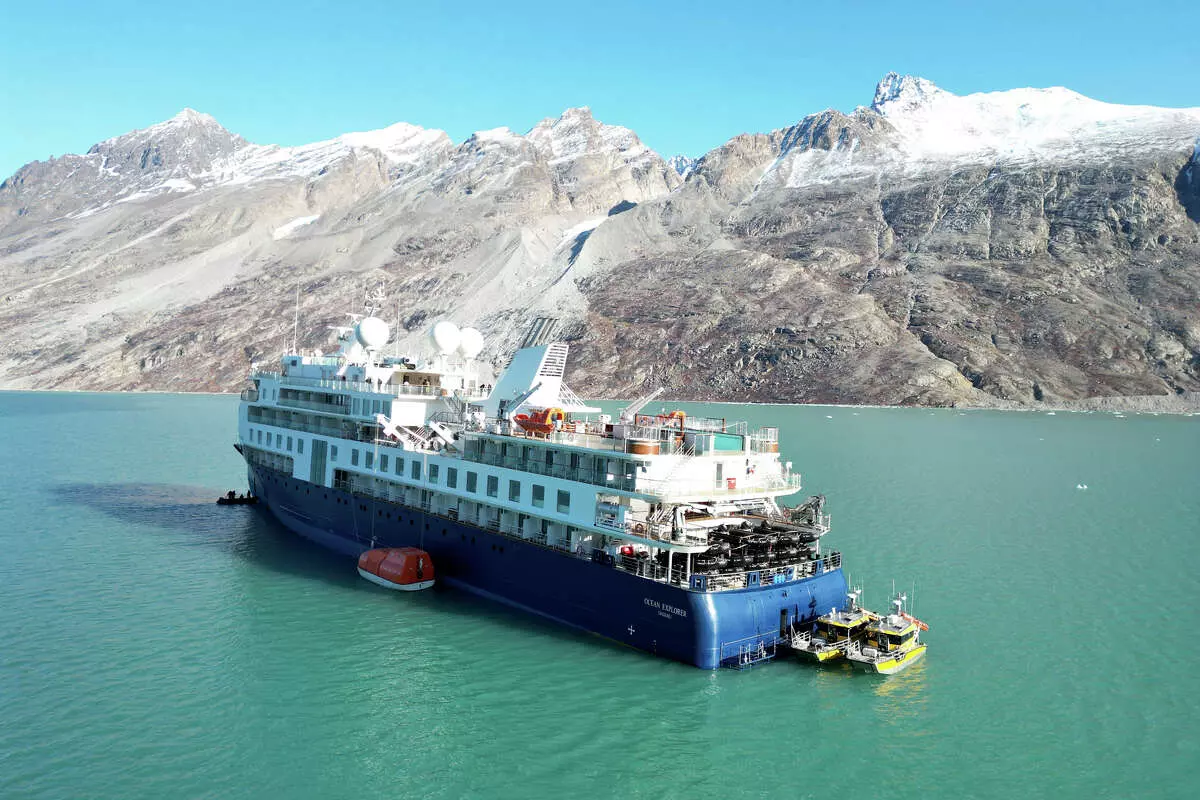
3 passengers test positive for COVID-19 aboard cruise ship stranded in Greenland
Australia-based Aurora Expeditions said the passengers are currently in isolation and are being looked after by the onboard doctor, medical team and crew

At least three passengers aboard luxury cruise ship MV Ocean Explorer that ran aground in Greenland, have contracted COVID-19, the ship’s operator has said.
The news comes following a third failed attempt to free the cruise liner, after a fisheries research vessel attempted to pull the ship free at high tide on Wednesday (September 14).
“These passengers are currently in isolation. They are looked after by our onboard doctor, medical team and crew, and they are doing well,” the Australia-based Aurora Expeditions said in a statement. The others on the MV Ocean Explorer were “safe and healthy," it added.
Australian newspaper The Sydney Morning Herald quoted a retiree from Australia, Steven Fraser, who is on the ship, saying: “Everyone's in good spirits. It's a little bit frustrating, but we are in a beautiful part of the world." Fraser told the newspaper that he himself had come down with COVID-19 on the ship.
The cruise ship ran aground above the Arctic Circle on Monday in Alpefjord, which is in the Northeast Greenland National Park, the world's northernmost national park. The park is nearly the size of France and Spain combined, and approximately 80 per cent is permanently covered by an ice sheet. Alpefjord sits about 240 km away from the closest settlement, Ittoqqortoormiit, which itself is nearly 1,400 kilometres from the country's capital, Nuuk.
“Unfortunately, the attempt (to free the ship) was not successful,” said the Danish Joint Arctic Command, which is coordinating the operation.
Earlier this week, the cruise ship made two failed attempts to float free on its own during high tide.
In a statement, the Arctic Command said its “first priority” was to have its larger inspection vessel Knud Rasmussen reach the site, saying the ship was expected Friday evening after it had to “slow down a bit” on its way because of the weather.
Passengers, crew safe
The Bahamas-flagged cruise ship has passengers from Australia, New Zealand, South Korea, the United Kingdom and the United States. It has an inverted bow, shaped like the one on a submarine, 77 cabins, 151 passenger beds and 99 beds for crew, and several restaurants.
The Arctic Command earlier said there were other ships in the vicinity of the stranded cruise liner. Members of the Sirius Dog Sled Patrol, a Danish naval unit that conducts long-range reconnaissance and enforces Danish sovereignty in the Arctic wilderness, were also nearby. The latter visited the ship on Tuesday and reported that everyone on board was fine and no damage to the vessel was reported.
The weather for the next days show sun, blue skies and temperatures around 5 degrees Celsius (41 degrees Fahrenheit), according to the Danish Meteorological Institute.
Denmark's Danish Maritime Authority have asked police in Greenland to investigate why the ship ran aground and whether any laws had been violated, a police statement said, adding that no one has been charged or arrested. An officer had been on board the ship to carry out “initial investigative steps, which, among other things, involve questioning the crew and other relevant persons on board,” it added.
The ship's owner, Copenhagen-based SunStone Ships, said in a separate statement that the cruise liner began its latest trip on September 2 in Kirkenes, in Arctic Norway, and was due to return to Bergen, Norway, on September 22. It added that there was “no breach of the hull and no pollution” as a result of the ship's running aground.
The primary mission of the Joint Arctic Command is to ensure Danish sovereignty by monitoring the area around the Faeroe Islands and Greenland, including the Arctic Ocean in the north. Greenland is a semi-independent territory that is part of the Danish realm, as are the Faeroe Islands.
(With inputs from agencies)

